Source: The Conversation (Au and NZ) – By Stephen Poropat, Postdoctoral Researcher (Palaeontology), Swinburne University of Technology
Will there ever be dinosaurs again? — Anonymous
What an interesting question! Well, technically dinosaurs are still here in the form of birds. Just like you’re a direct descendant of your grandparents, birds are the only remaining direct descendants of dinosaurs.
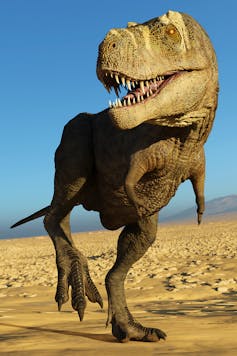
But I suppose what you’re really asking is whether dinosaurs like Tyrannosaurus or Triceratops could ever exist again. Although that would be fascinating, the answer is almost definitely no.
While there’s only one generation between you and your grandparents – that is, your parents – there are many millions of generations between today’s birds and their ancient dinosaurs ancestors.
This is why today’s birds look, sound and behave so differently to the prehistoric beasts that once roamed Earth.
Animals evolve to change, but can’t choose how
To understand this, we have to understand “evolution”. This is a process that explains how every living thing (including humans) evolved from past living things over millions, or even billions, of years.
Different animals evolve their own differences to help them survive in the world. For example, 66 million years ago, birds survived the catastrophic event that killed all other dinosaurs and marked the end of the Mesozoic era.
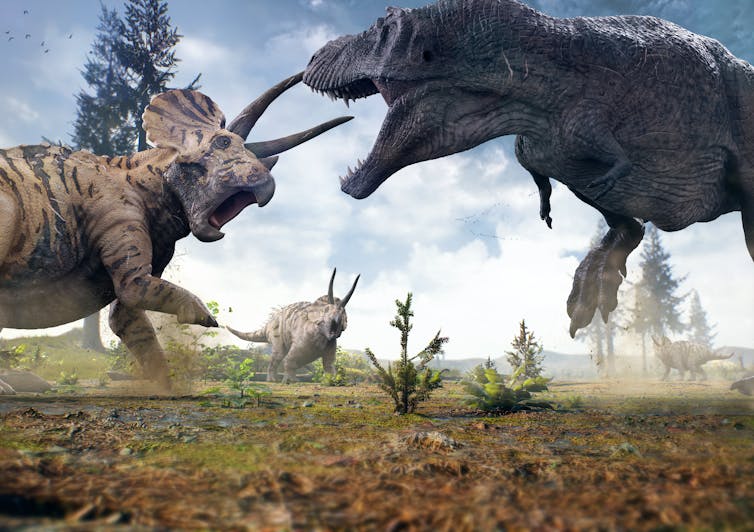
After this, a blanket of ash wrapped around the world, cooling it and blocking out the sunlight plants need to survive. Plant-eating animals would have struggled to stay alive.
But birds did, perhaps because they were small even then. They likely ate seeds and insects and took shelter in small spaces. And being able to fly would have helped them explore far and wide for food and shelter.
That said, if the conditions that came after the dinosaur extinction event returned today, no modern animal would evolve back into a dinosaur. This is because animals today have a very different evolutionary past to dinosaurs.
They evolved to have features that help them survive in today’s world, rather than a prehistoric one. And these features limit the ways they can evolve in the future.
Which came first, the chicken or the dinosaur?
For an animal to be an actual “dinosaur”, it must belong to a group of animals known by scientists as Dinosauria. These all descended from a common ancestor shared by Triceratops and modern birds.
Other than birds, Dinosauria doesn’t include any living creature. So for a dinosaur to re-evolve in the future, it would have to come from a bird.
Dinosauria’s extinct members included sauropods, stegosaurs, ankylosaurs, ornithopods, ceratopsians and non-bird theropods. Modern birds evolved from a small group of theropods. However, since so much time has passed, this link is limited.
Specifically, birds have a very different collection of “genes”. These are the same built-in “rules” your parents passed down to you that decide, for example, what colour your eyes will be.
The more generations that pass between an ancestor and their descendant, the more different their genes will be.
Even if it could happen, what would this take?
Think of how much a bird would need to change to look like Tyrannosaurus rex or Triceratops. A lot.
Dinosaurs had long tails with bones all along them. Birds’ tails are stumpy and have been for more than 100 million years. It’s unlikely this would ever be reversed.
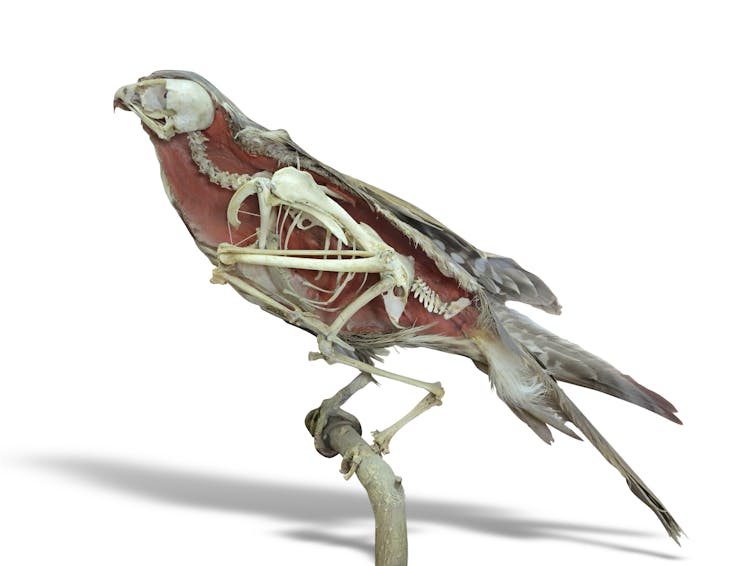
Also, modern birds walk on their back legs only and (in most cases) have four toes and three “fingers” in their wings.
Compare that with Triceratops, which walked on all four limbs, had five fingers on its front feet (the inner three of which were weight-bearing) and four toes on its back feet.
It may not be impossible for birds to gain two more fingers to have five like Triceratops; some people with a condition called “polydactyly” have more than five fingers, but this is very rare.
There aren’t really any situations where an extra finger (or one less) would be necessary for a bird’s survival. Thus, there’s little to no chance birds will evolve to change in this way.
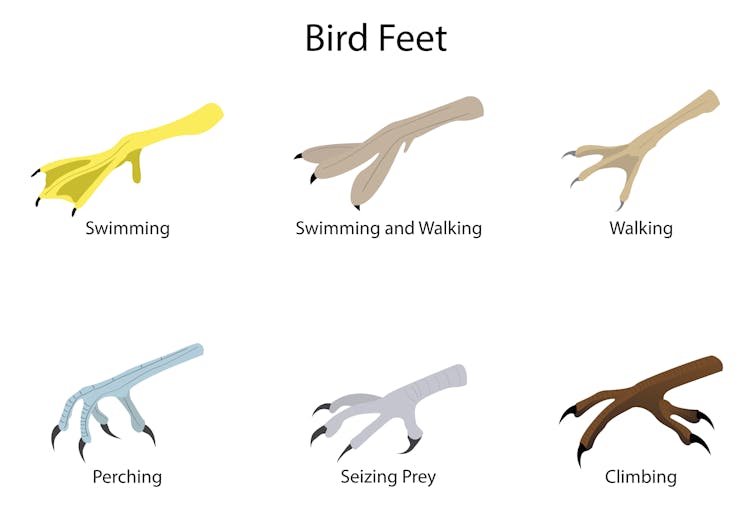
Even if birds did eventually start to walk on all four limbs (legs and wings), they wouldn’t move the same way a Triceratops did because the purpose of a bird’s wings is very different to that of a Triceratops’s legs.
Dinosaurs are history
We know from fossil discoveries that Triceratops and Tyrannosaurus had scaly skin covering most of their bodies. Most modern birds have scaly feet, but none are scaly all over.
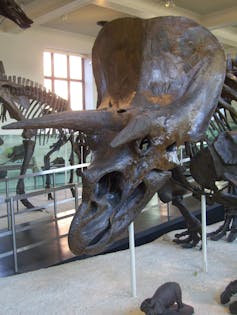
It’s hard to imagine what would force any bird to naturally replace its feathers with scales. Birds need feathers to fly, to save energy (by staying warm) and to put on special displays to attract mates.
Triceratops did have a “beak” at the front of its mouth, but this evolved completely separately to the beaks of birds and had two extra bones — something no living animal has.
What’s more, behind its beak and jaws, Triceratops had rows of teeth. While some birds such as geese have spiky beaks. No bird in the past 66 million years has ever had teeth.
Considering these huge differences, it’s really unlikely birds will ever evolve to look more like their extinct dinosaur relatives. And no extinct dinosaur will ever come back to life either — except maybe in movies!

– ref. Curious Kids: could dinosaurs evolve back into existence? – https://theconversation.com/curious-kids-could-dinosaurs-evolve-back-into-existence-148623








